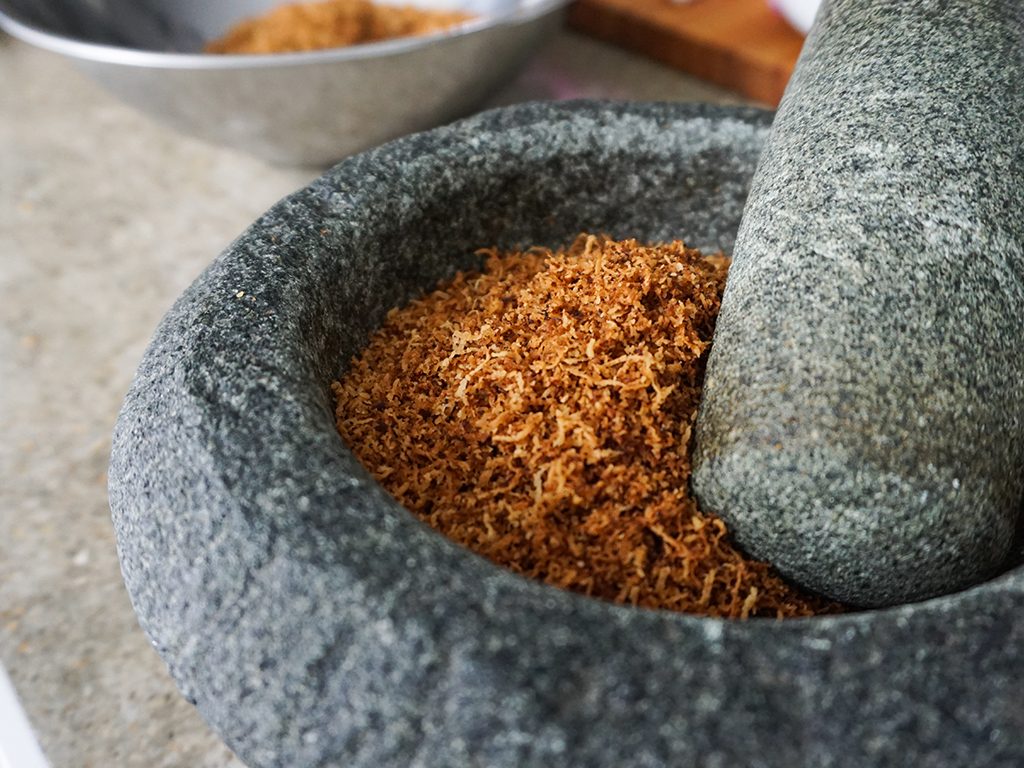 Kerisik – golden brown and ready for pounding
Kerisik – golden brown and ready for pounding
Kerisik is a classic ingredient regularly used in Malay cooking. Made from fresh, grated coconut, it is, essentially, toasted grated coconut pounded until it becomes a thick, gritty, oily paste. It has a delightful, mouth-watering scent, and a deep, toasty-smoky coconut flavour that adds a different element to the dishes it is made with. Eliminating kerisik from any recipe that calls for it will result in a dish that will not capture that depth of taste and texture kerisik brings to it.
Making kerisik is relatively easy, which is why it is often made fresh instead of store bought by chefs and the best of home cooks. Different ‘levels’ of kerisik varying in texture and oiliness are used for different recipes. We will be sharing with you the kind you’ll want when making beef or chicken rendang.
Ingredients
- 200g freshly grated coconut
Method
- Add freshly grated coconut to a dry non-oiled wok or a non-stick pan on medium to high heat.
- Stir continuously with a wooden spoon or metal spatula until it turns a nice, golden brown, continuously scraping the sides of the pan to ensure the grated coconut doesn’t stick and burn unevenly. This will take about 10 minutes.
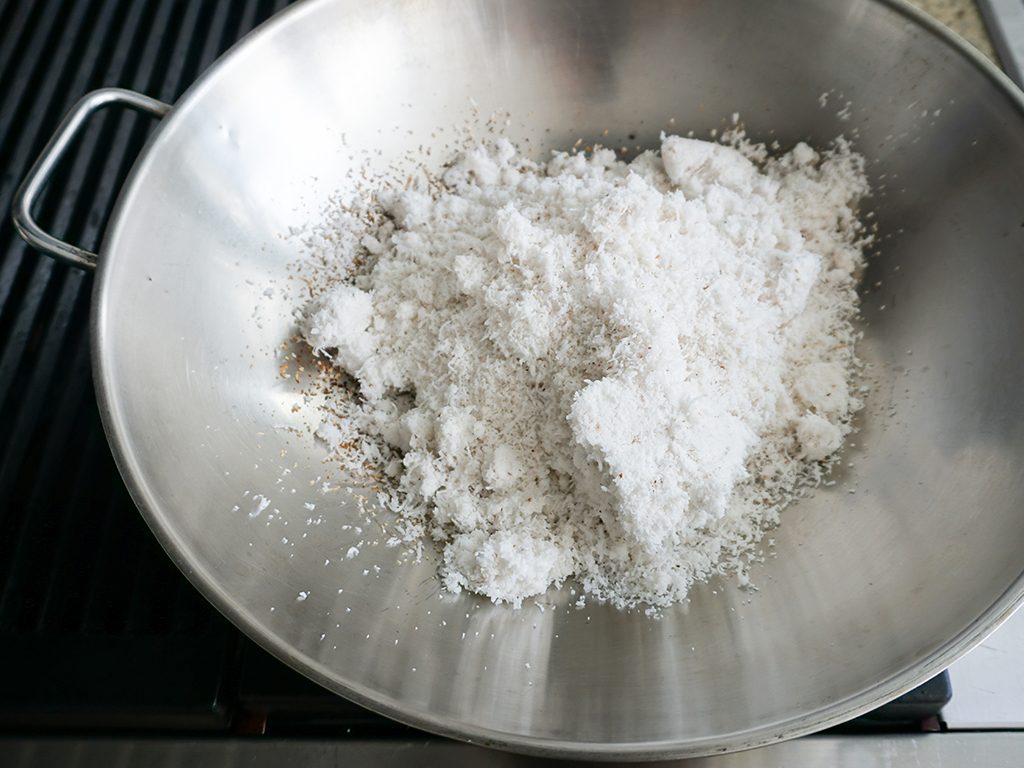
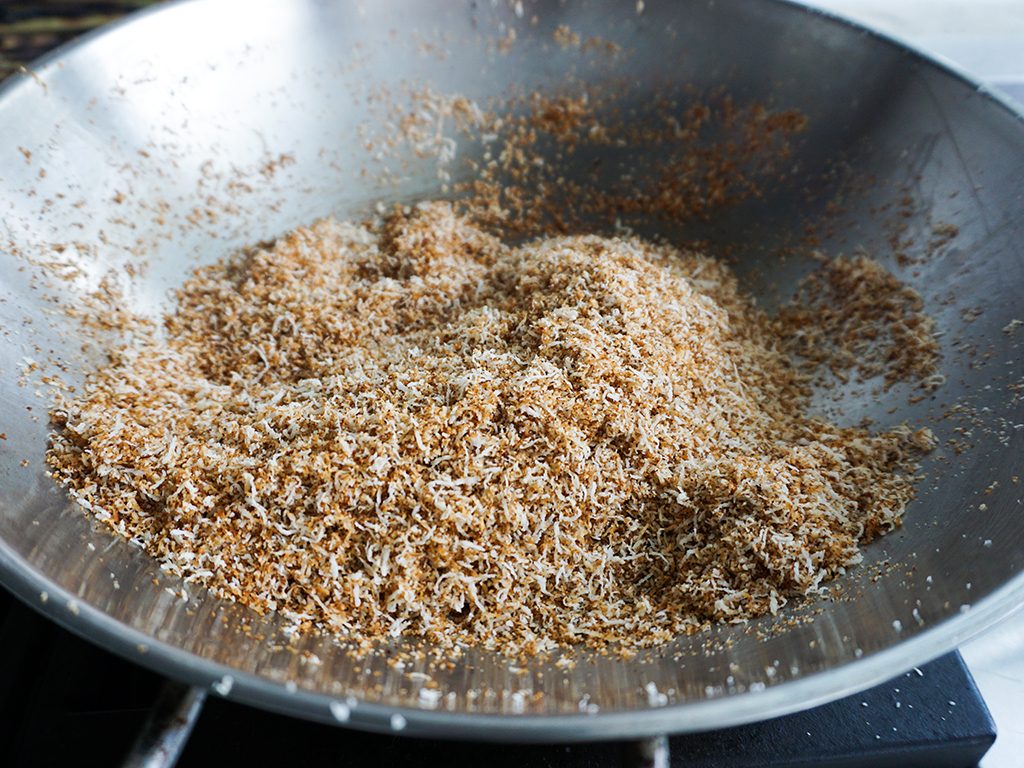
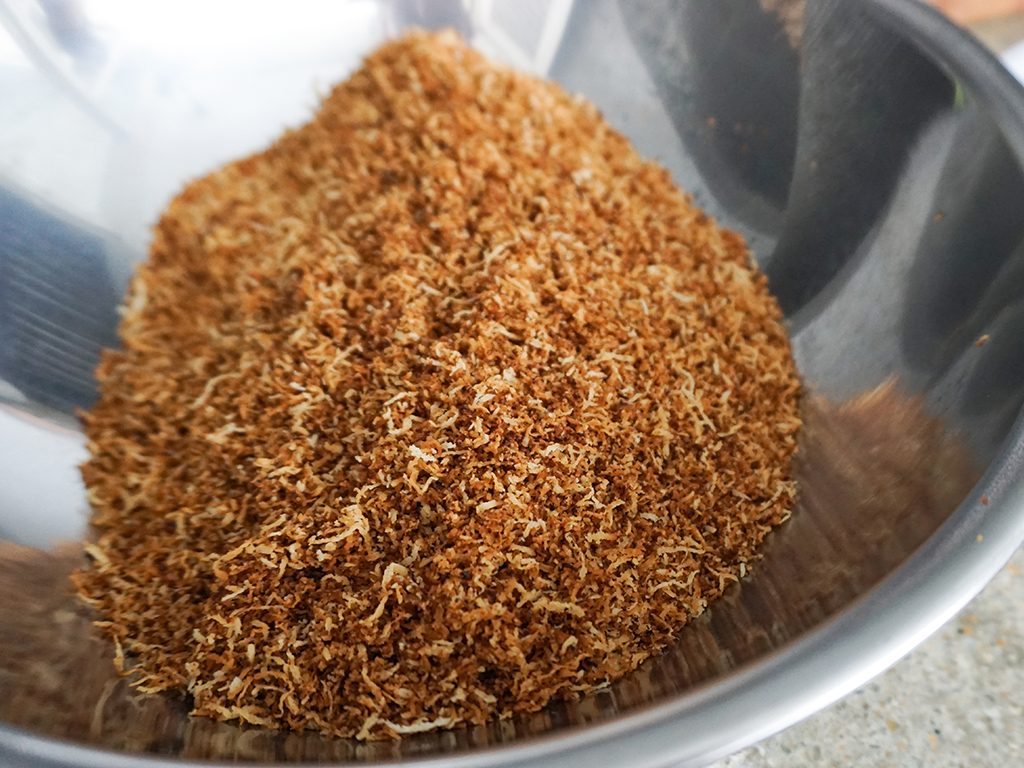
- Remove from heat and place in a large enough bowl.
- While the coconut is still hot, put it into a mortar with room to spare to allow for movement.
- Pound and keep pounding toasted coconut with a pestle until the oil starts to emerge from the coconut. You may have to do this in batches if your mortar can’t fit all the toasted coconut in one go. The end result will be a thick, oily and gritty paste.
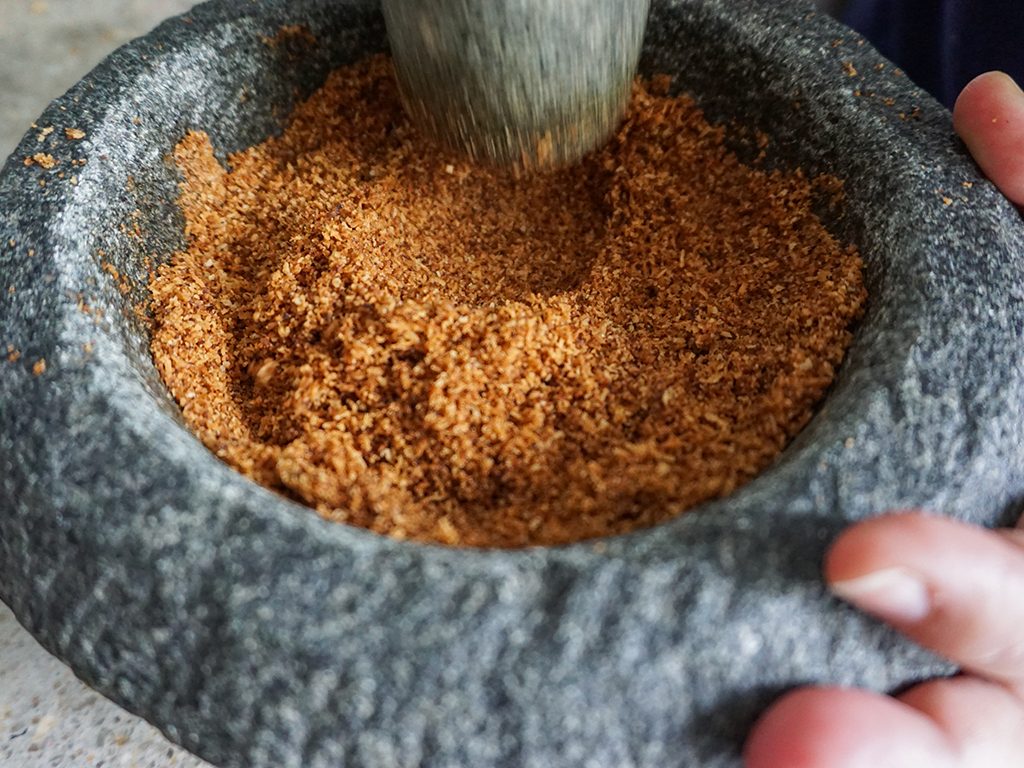
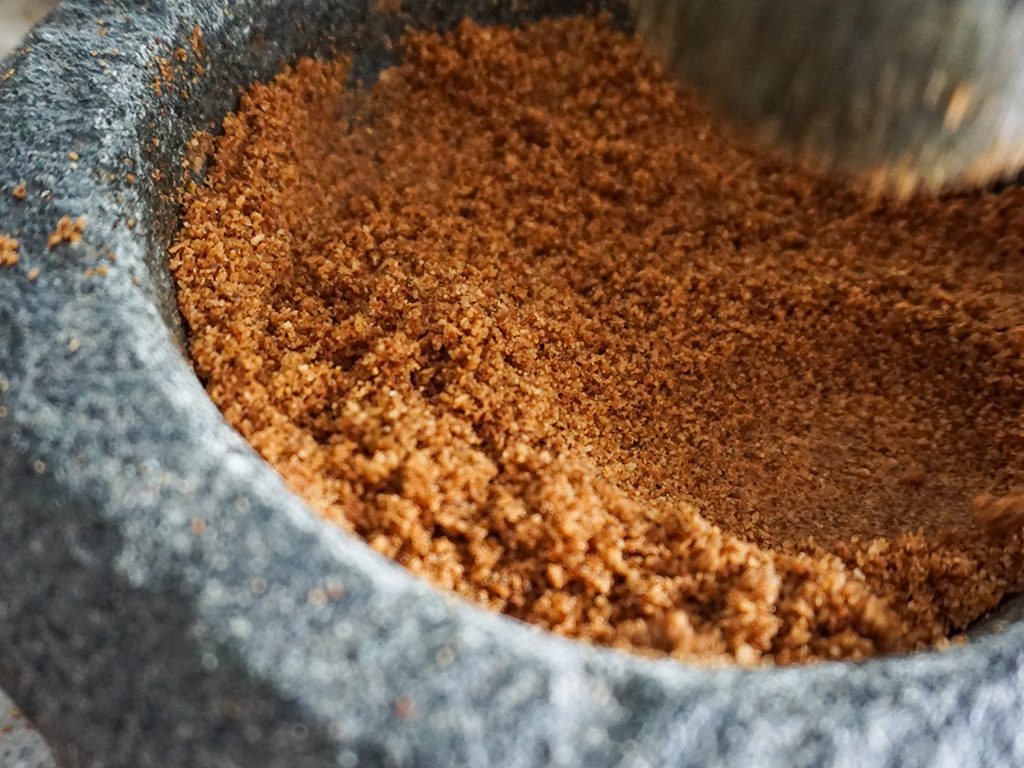
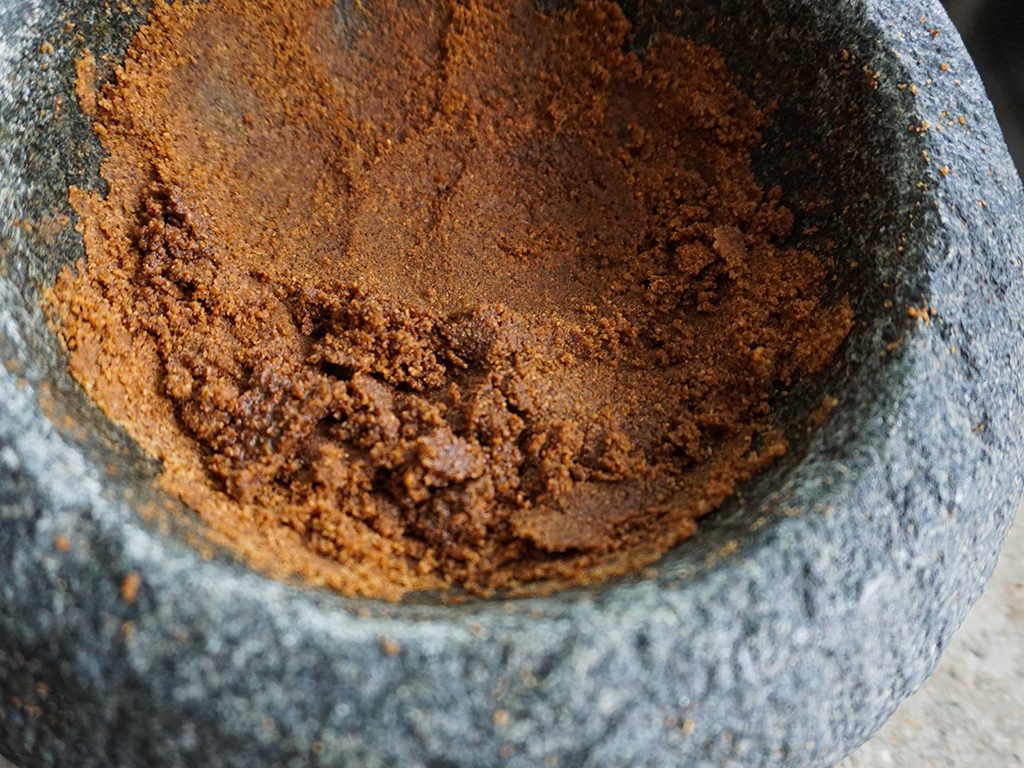
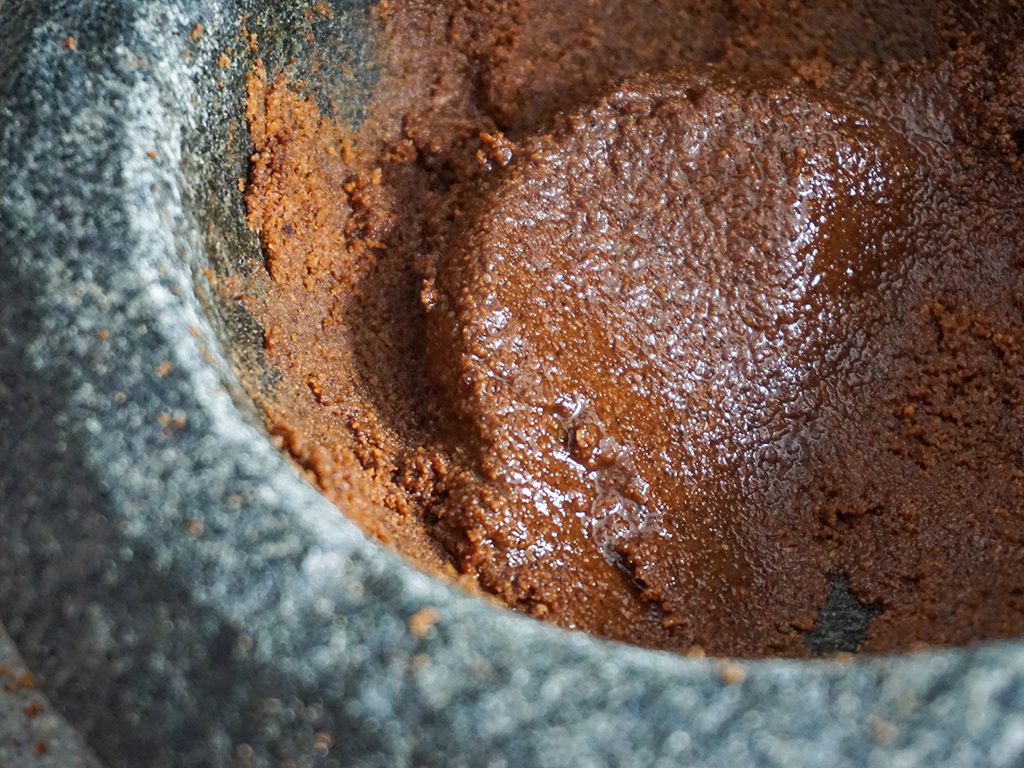
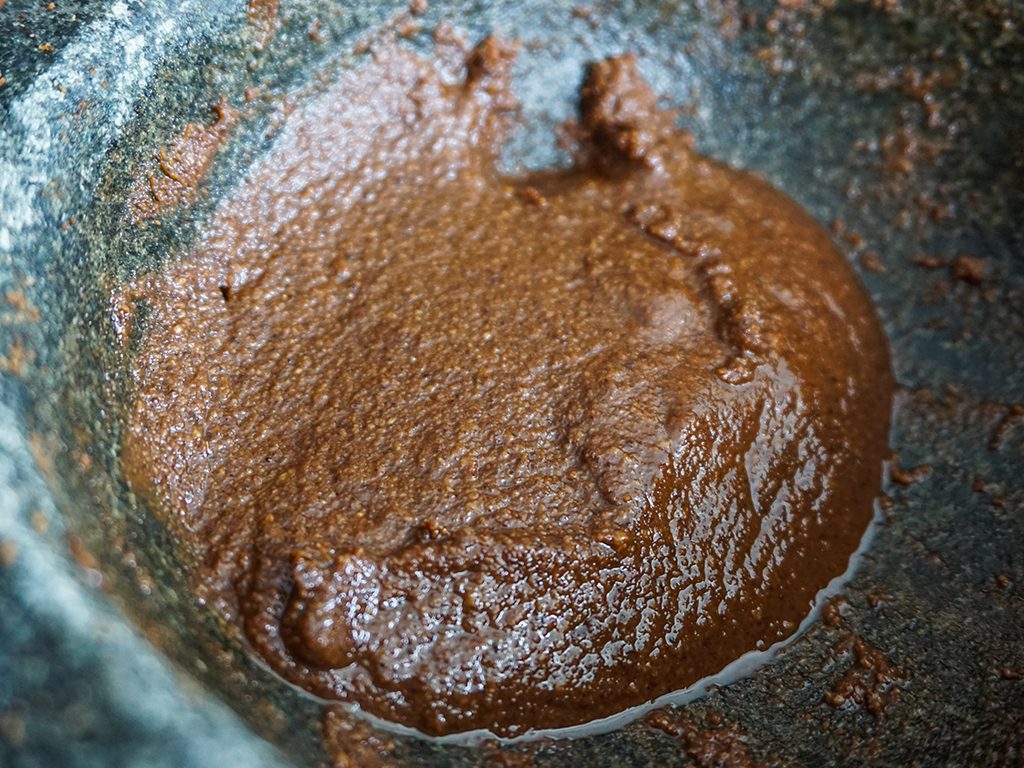
- You can use kerisik immediately or let it cool thoroughly and keep refrigerated in an air tight container for up to two weeks. Leftovers can also be frozen for up to a couple of months. The fresher the kerisik, the better the taste though.
Extra tips
- Waiting for the toasted coconut to cool down before pounding it will make it more difficult to get the oil out, so try to avoid this.
- If you’re feeling a little lazy, you can use a food processor instead of pounding toasted coconut by hand. Keep processing the coconut until it becomes an oily, sandy paste. However, this method will result in a finer textured kerisik, which may be what you want for other recipes although not necessarily for rendang.
Kerisik is to rendang like milk is to teh tarik – absolutely essential. Show us how your kerisik turned out by tagging us with #butterkicap.
